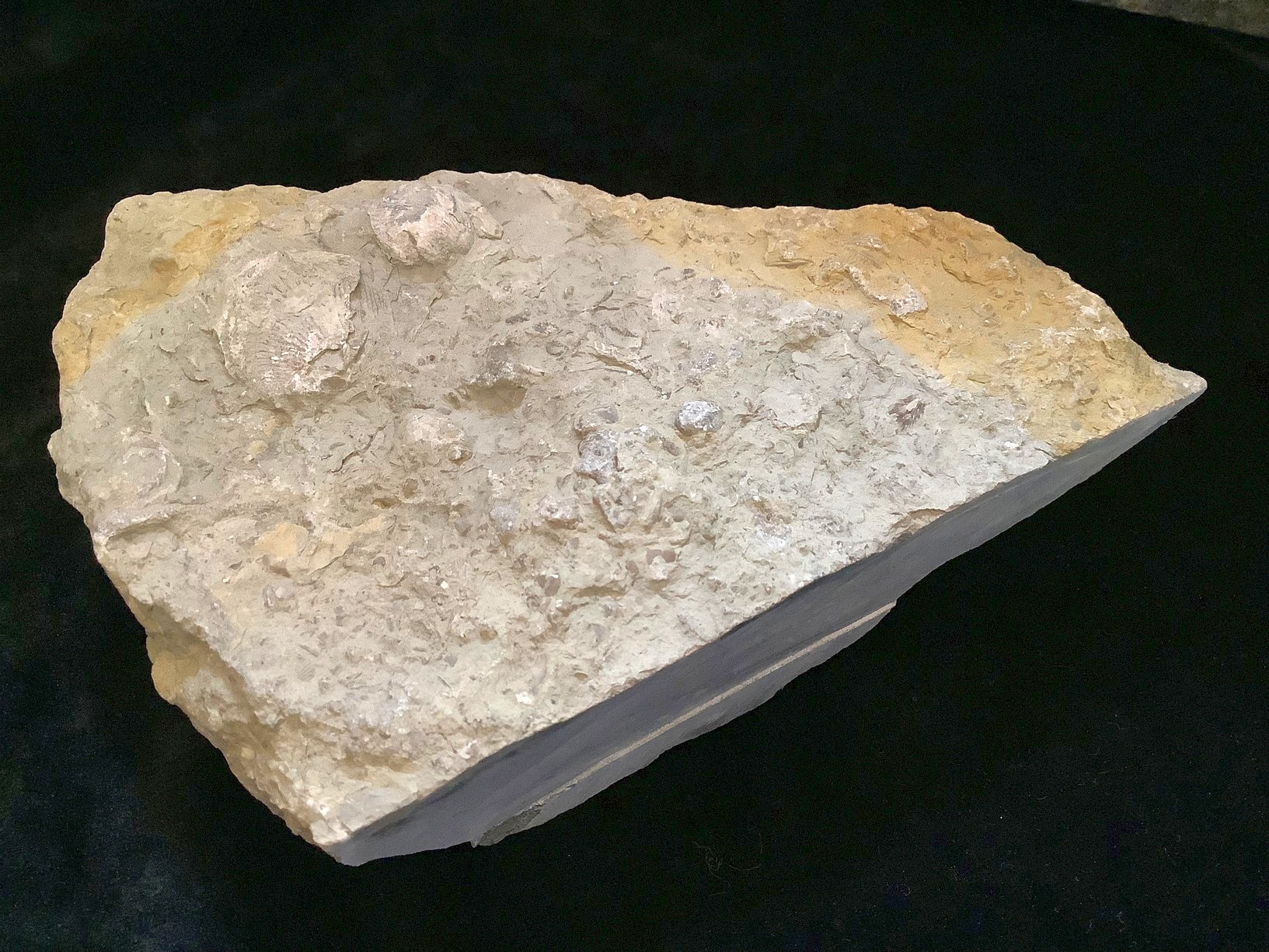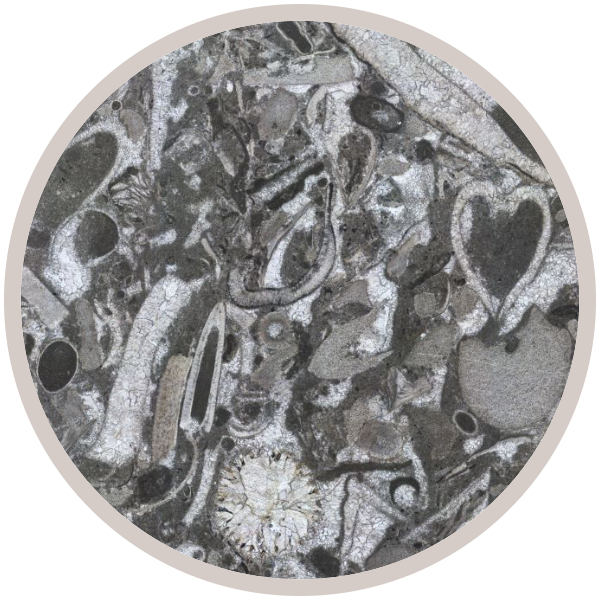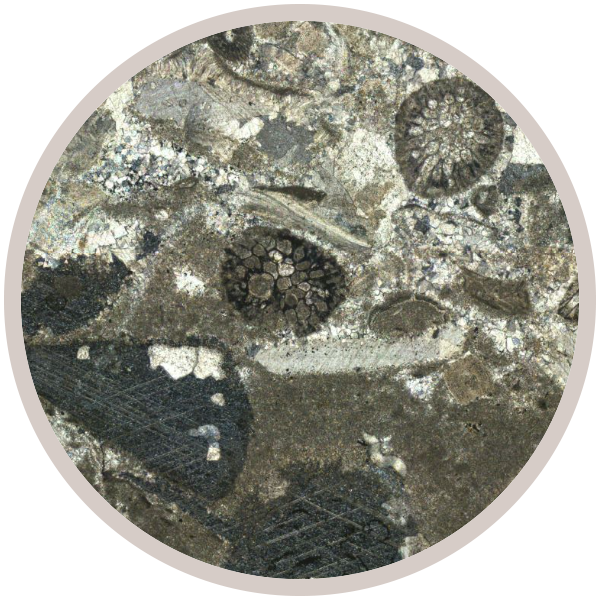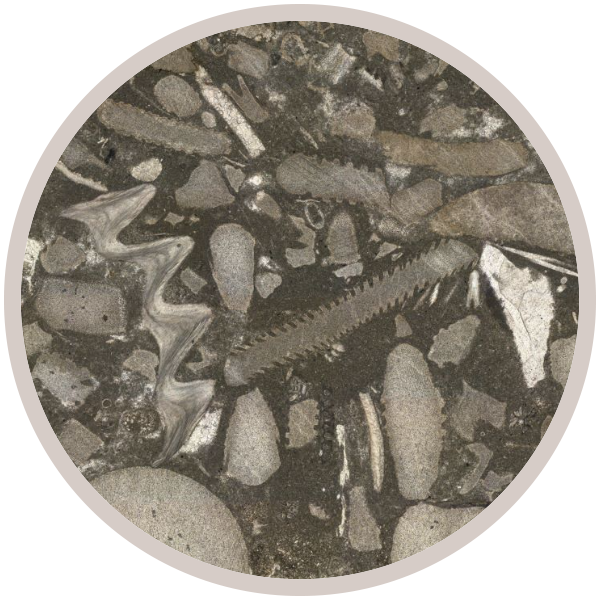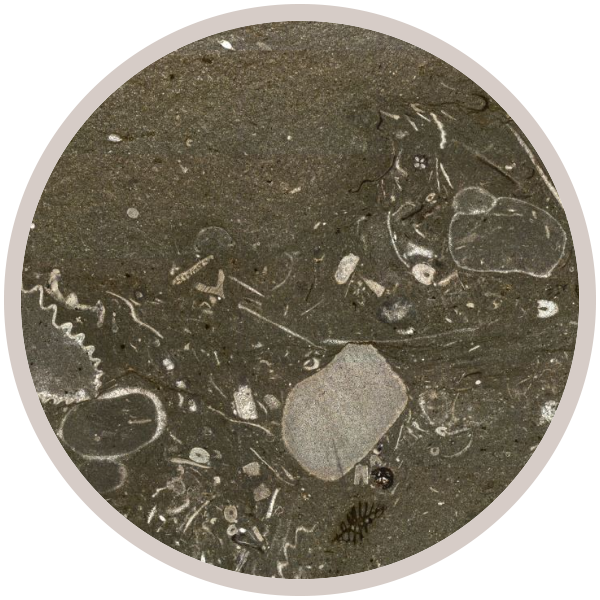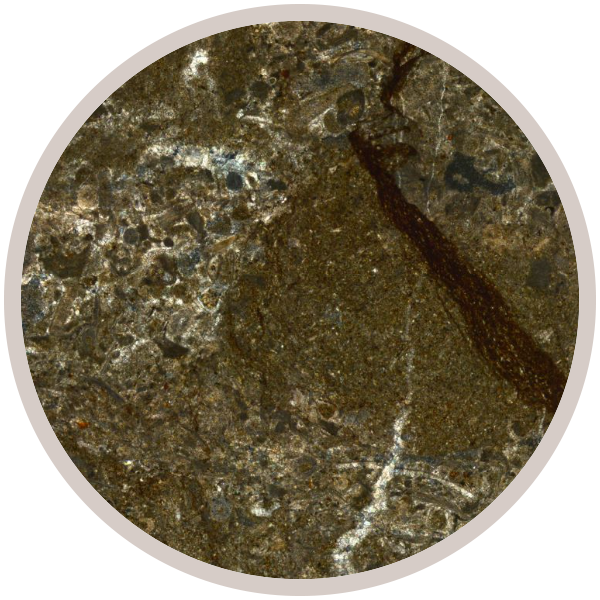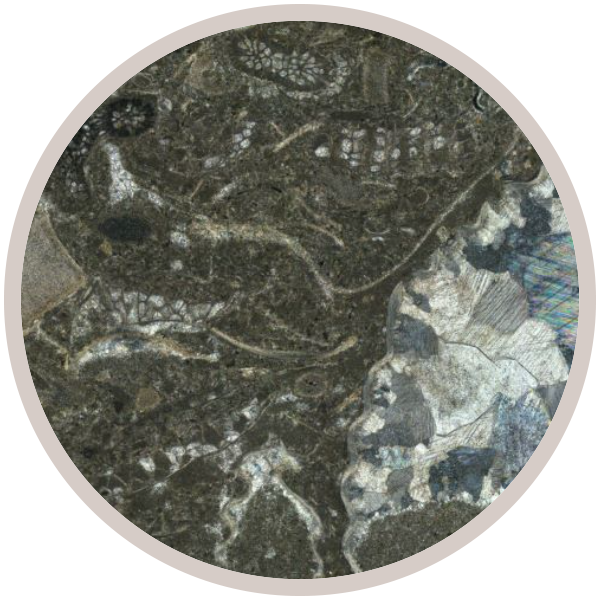
Fact sheet
This sample is a limestone of Silurian (Wenlock) age, crammed with fossils embedded in fine-grained micrite (microscopic particles of recrystallized lime mud), which appears a murky brown in thin section.
The limestone was laid down in a shallow tropical sea south of the equator around 428 million years ago. The area of Wren's Nest featured small coral reefs teeming with life, separated by shallow banks and troughs of lime mud.
The limestone reefs were home to compound and solitary corals, bryozoans, crinoids, brachiopods, gastropods, cephalopods and trilobites. Fossils visible in this thin section include fragments of crinoid stem, fibrous and ridged brachiopod shells and bryozoans (patches of meshwork with round holes).
Many pale patches in the thin section represent voids infilled with crystalline (sparry) calcite. A fascinating feature of this section is the presence of 'geopetal structures', especially the three large brachiopod shells half filled with micrite and half with sparry calcite. The boundary between the two materials marks the approximate palaeohorizontal, when the empty shells partially filled with lime mud but were then buried with a void in the upper part of the shell. This void was later filled with calcareous fluid that precipitated calcite crystals.
This sample was collected by Bea, a student from King Edward's School, Stourbridge, as part of the 'Macro to Micro' project.
This Collection showcases the geodiversity of a classic geological site: the Wren's Nest National Nature Reserve in the West Midlands.
As well as displaying thin section and hand specimen views along with information setting them in the context of their landscapes, we also include perspectives and creative responses to the geological heritage of the sites from the local community.
| Explore the stories of the rock layers at Saltwells and Wren's Nest NNRs, designed by students at King Edward VI School, Stourbridge: |
This Collection was made possible by funding awarded to the 'Macro to Micro' project by the Natural Environment Research Council (NERC) under their 'Growing Roots' scheme.
